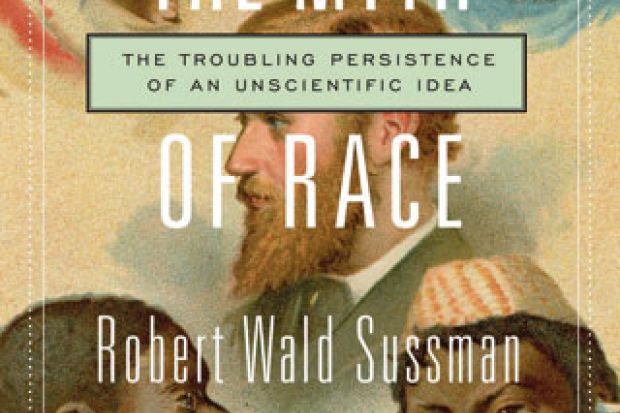Not only is this book a significant contribution to the view of race and racism in traditional “four-field” anthropology in the US, but it is also important to the understanding of global notions of contemporary racism. Most US biological anthropologists discuss the fact that biological races do not exist, and cultural anthropologists talk about the social and cultural construction of the categories that we call “race”. But very few of the former group have taken a historical approach, as Robert Wald Sussman does here, in probing the links between Europe and the US in the development of a racial ideology that spans at least five centuries, and shows very little sign of completely abating.
Why do these concepts of the racial and cultural inferiority of the “other” continue to show up in our contemporary media, culture and political economy? Sussman offers several good reasons why notions of a fixed racial hierarchy persist, and appear normal, among certain elites in the hierarchy of privilege in the US and some Western European countries. For him, notions of racial hierarchy are tied up in historical, political, social and scientific notions of fixed human intellectual capability. These hierarchies of racial inequality were created around the same time as European exploration and colonisation was beginning. In the ensuing five centuries, there has been a more sophisticated development of notions of race that incorporate science, politics, religion and social organisation to promote ruling regimes at the expense of the powerless.
In an early chapter, Sussman says that “racial structure is not based on reality”. Speaking as a biological anthropologist, he means that it is not based on biological reality. But, of course, it is very real as a cultural construct. Elsewhere, he says that “ignorance and intolerance continue to exist in the face of scientific evidence to the contrary”, and he finally reiterates that “ignorance and intolerance around race still exists, despite the science to the contrary”. These are statements that the cultural anthropologist in me must answer. Sussman has provided a rational scientific analysis of a concept that is not rational, and that has its origins and its persistence in a highly racialised and stratified system with whiteness at the top of that system. This system existed in the 18th, 19th and 20th centuries, and it still exists in the 21st century in the US and around the world. Moreover, this often invisible power hierarchy confounds us still further by its use of such terminology as “colourblindness” and “post-racial”.
Scholarly analyses of globalisation have proliferated, but race and processes of racialisation are rarely considered central to academic discussions of global economic and political transformations. Yet Sussman shows us how scientists and elites, both in the US and Europe, facilitated the transmission and reproduction of deeply embedded social prejudices rooted in a past characterised by territorial concepts of identity that both generated and were generated by structural racial inequalities. The distribution of wealth that we see in the 21st century has historically entrenched racial hierarchies embedded in it. Our contemporary racial hierarchies are buttressed by the continued collusion of powerful elites enforcing their own agendas, using science – including the rise of a new “scientific racism”, as Sussman describes – that has at its core the belief in the fixed, immutable nature of “other” groups (ie, immigrants and refugees in contemporary Western Europe and the US).
The Myth of Race encourages us to understand where stereotypes and misinformation fit in our consideration of whether and how notions of biological race remain pervasive in today’s discourse and policy. My take on this situation is that in order to answer that question, we must first understand how a continued belief in and promotion of “race science” or “cultural race” helps certain groups to define, justify and maintain privileged positions of power and authority in the economic, scientific and policy communities. If we wish to expose and begin to eradicate this kind of structural racism, it is not enough for scholars such as Sussman to offer insights into the breadth and depth of the social and cultural underpinnings of structural racism, and the power dynamics that help maintain the highly racialised and stratified social system in US society and elsewhere. We must do more. His book is certainly a giant step in that direction.
The Myth of Race: The Troubling Persistence of an Unscientific Idea
By Robert Wald Sussman
Harvard University Press, 384pp, £25.95
ISBN 9780674417311
Published 23 October 2014
Register to continue
Why register?
- Registration is free and only takes a moment
- Once registered, you can read 3 articles a month
- Sign up for our newsletter
Subscribe
Or subscribe for unlimited access to:
- Unlimited access to news, views, insights & reviews
- Digital editions
- Digital access to THE’s university and college rankings analysis
Already registered or a current subscriber? Login





